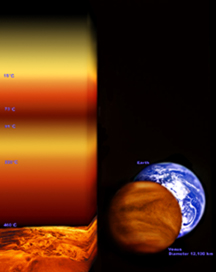This is an artist's rendition of a column of clouds on Venus.
The temperature of the different layers is shown at the left.
Click on image for full size
Windows to the Universe original image
Air on Venus
The atmosphere of Venus is very hot and thick. You would not survive a
visit to the surface of the planet - you couldn't breathe the air,
you would be crushed on by the enormous weight of the atmosphere, and you
would burn up in surface temperatures high enough to melt lead.
The atmosphere of Venus is made up mainly of carbon dioxide, and
thick
clouds of sulfuric acid completely cover
the planet. The atmosphere
traps the small amount of energy from the sun that does reach the
surface along with the heat the planet itself releases. This greenhouse
effect has made the surface and lower atmosphere of Venus one of the
hottest places in the solar system!
Why should Venus and not the Earth have a hot and thick atmosphere? Some scientists call it the Goldilocks phenomenon.
You might also be interested in:
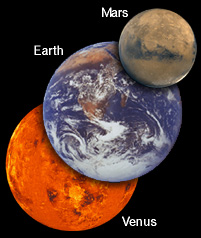
Just as Goldilocks found the porridge that was just right, the Earth seems to be just right for living creatures. The Earth seems to be the perfect distance from the sun for lots of water. Venus is too
...more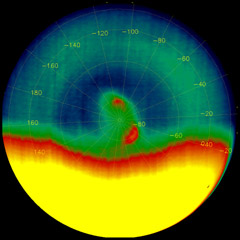
A vortex is a swirling, circular movement of air and clouds... like in a tornado or hurricane. The plural form of vortex is "vortices". The planet Venus has vortices in its atmosphere above each of its
...more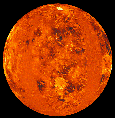
Venus is the second planet from the Sun, and is Earth's closest neighbor in the solar system. Venus is the brightest object in the sky after the Sun and the Moon, and sometimes looks like a bright star
...more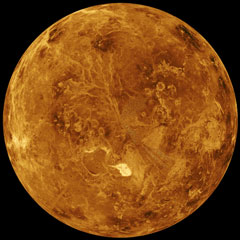
Venus is the hottest planet in our Solar System. On Earth, places near the equator are hot. Places near the poles are cold. On Venus, it is really hot everywhere... even at the North and South Poles. Venus
...more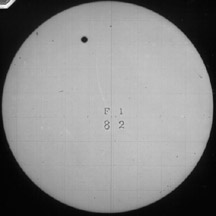
Sometimes the planet Venus goes between Earth and the Sun. From Earth it looks like a black dot moves across the Sun. Astronomers call this a transit of Venus. Transits of Venus don't happen very often.
...more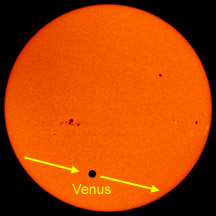
Sometimes the planet Venus gets between Earth and the Sun. When it does, we see a black dot move across the Sun. The black dot is Venus. Astronomers have a name for this. They call it a "transit"
...more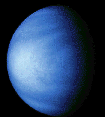
The following may be the history of Venus. at the conclusion of forming it continued to be hit with leftover material. Venus warmed from inside, and separated into layers. Because Venus is close to the
...more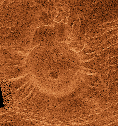
This is an example of a volcanic tick.
...more


